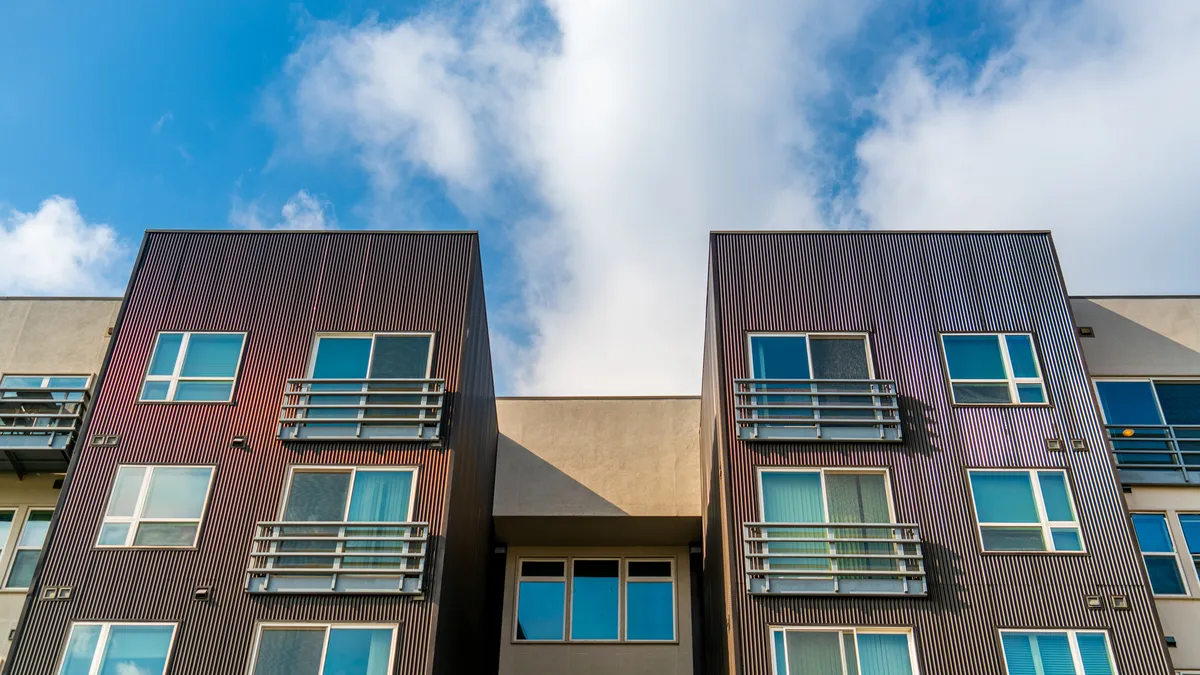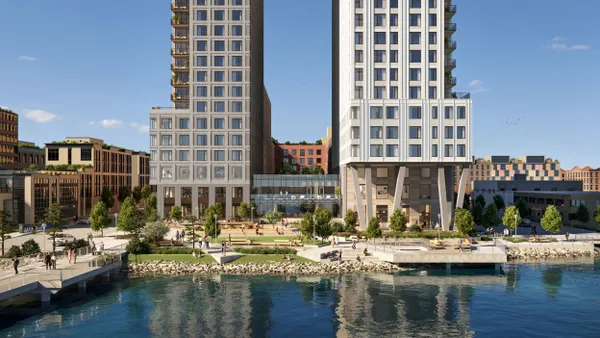Dive Brief:
- Regulations at all levels of government account for an average of 40.6% of apartment development costs, according to research from the National Association of Home Builders (NAHB) and the National Multifamily Housing Council (NMHC).
- “Not In My Backyard” (NIMBY) opposition was a major contributor to these costs with three-quarters (74.5%) of respondents saying they had encountered these roadblocks. Their opposition adds an average of 5.6% to development costs and delays the completion of projects by an average of 7.4 months, according to a survey of 49 developers in the U.S.
- Slightly less than half of the respondents, 47.9%, avoid building in a jurisdiction with inclusionary zoning requirements, which require developers to allocate a certain number of apartments at less-than-market-rate rents in more than 900 jurisdictions around the country, including New York City, Chicago, Telluride, Colorado and rural North Elba, New York. A large majority of developers, 87.5%, avoid working in jurisdictions with rent control, like New York City, Washington, D.C., San Francisco and, recently, St. Paul, Minnesota.
Dive Insight:
Doug Bibby, NMHC president, argues that the overly burdensome regulatory environment” is at least partly responsible for the housing crisis in the U.S. “We need to do all we can to lower the cost of housing, and that should start with eliminating duplicative and unnecessary regulations,” Bibby said in a press release accompanying the report. “Those extra costs make many projects financially unviable given that housing providers are already dealing with sky-high land, materials and labor costs.”
However, housing advocates argue that policies like inclusionary zoning can leverage the profitability of new developments to pay for new affordable housing while also creating more inclusive communities. Regulations can also protect the environment and people working on projects, which the NAHB and NMHC acknowledge in their reports.
Changes to building codes over the past 10 years comprise the highest percentage of development costs (11.1%), followed by fees imposed when site work begins (8.7 percent). Complying with OSHA or other labor regulations accounted for 2.7% of costs.
Cost of regulation as a percentage of development costs
| Regulation | % of Development Cost |
| Changes to building codes over the past 10 years | 11.1% |
| Site work costs (fees, studies) | 8.5% |
| Development requirements beyond the ordinary | 5.4% |
| Fees charged when construction is authorized | 4.4% |
| Applying for zoning approval | 3.2% |
| Costs of affordability mandates | 2.7% |
| Complying with OSHA and labor regulations | 2.6% |
| Land dedicated to the government or left unbuilt | 2.4% |
| Pure cost of delay | 0.5% |
SOURCE: NMHC
In the vast majority of cases, 93.9%, developers need to rezone land after obtaining control of it. When this happens, the cost to rezone averages 3.4% of development costs.
After site work begins, more fees add up. Impact fees, charged in new developments for capital improvements, and utility impact fees average 8.7% of total development costs when they are required.
When jurisdictions ask for design features, such as a requirement for facades, it adds an average of 5.8% of total development costs. After site work is complete, jurisdictions may ask for building permit filing fees or charge for hooking up utilities, which average 4.6% of total development costs, according to the NAHB and NMHC.
Delays add up to 0.5% of costs. Recent permitting delays have forced developers to avoid building in certain areas altogether. “Backlogs are definitely entering into the equation on a national basis as to where we’re more likely to develop pipelines,” said Jay Hiemenz, President and COO of Scottsdale, Arizona-based Alliance Residential. “In some of the higher regulatory markets, like California, there’s only so fast you’re going to be able to move. It just adds time and costs, so you have to build that into your expectation sometimes.”
Click here to sign up to receive multifamily and apartment news like this article in your inbox every weekday.











